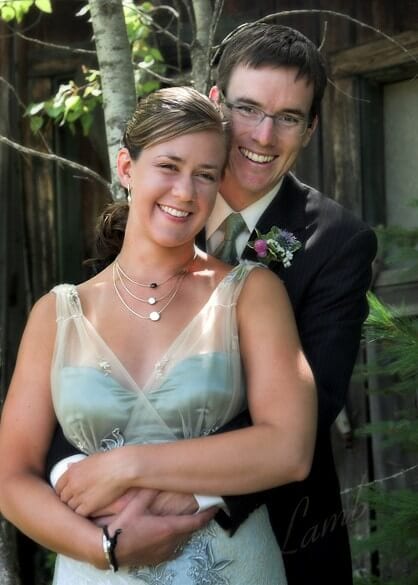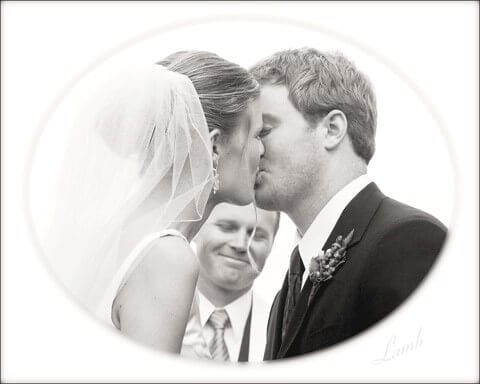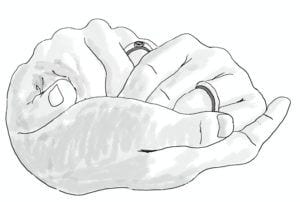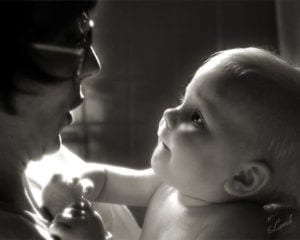Fellowship of the Rings: Common Sense Wisdom for Lasting Marriages: Part 1

By: Kirk Lamb, PhD., LP, Licensed Psychologist
© 2005 - 2018 Kirk Lamb, Ph.D., Author, for text, drawings, and photographs
© 2024 Bonnett Chandler, MA, LPCC,
Richard Chandler, MA, LPC, Kelly Krueger, MA, LMFT
Note: This marriage and couples relationship e-book is also available as a 40-page booklet for $7.95. If you wish to purchase a copy to give to an engaged couple, simply contact Richard Chandler.
All rights reserved worldwide. Rights of reproduction in any medium are prohibited without the written permission of the publisher.
Author’s Note: Each of the ideas presented in this ebook has something to do with how lasting couples create fellowship and, through it, the emotional safe-haven essential to their success.
I will present five of the most powerful tools a couple can employ to create this safe-haven. I have named them “Keepers of the Fellowship”:
- Treat your relationship as if it were your child.
- Face, don’t avoid, conflicts by “getting to the hurt.”
- Avoid financial betrayals every bit as much as romantic betrayals.
- Achieve a healthy “divorce” from families of origin and previous intimate partnerships.
- Support one another’s dreams and respect one another’s deepest dread.
I have based my thoughts on insights from my teachers: my couple clients (over one thousand since 1980), some pioneering marriage and relationship researchers, my professional colleagues, and my wonderful wife, Dee, with whom I have enjoyed a loving fellowship for decades.
A Note About Couples, Marriages and Partners:
The terms “couple,” “spouses,” “marriage,” “partners” and “relationship” will be used somewhat interchangeably throughout the booklet. While there are many meaningful distinctions among these terms, I have chosen to be deliberately imprecise in my effort to present insights that apply to just about all committed long-term relationships. Therefore, much of what I have presented here apply equally well to married and cohabiting couples; opposite-sex and same-sex couples; couples with children and those with none; mixed racial, mixed ethnic, and mixed religious couples; and second or third marriage couples.
Common Sense Wisdom for Lasting Couples
By: Kirk Lamb, PhD., LP, Licensed Psychologist
In his best-selling book, “Grow Up,” seasoned couples therapist Dr. Frank Pitman insists that lasting couples must choose to make their relationship a protective structure, one which rests not on love itself, but on an “agreement to love.”
He believes marriage is less about being “in love” than the commitment to learn to love again, every time we fall out of love. When I reflect on the good relationships I have witnessed, I too see couples that have created emotional safe havens within which they repeatedly relearn how to love one another.

“Marriage is not supposed to make you happy. It’s supposed to make you married; and once you are safely and totally married, then you have a structure of security and support from which you are free to make yourself happy. . . . Marriage is not about being in love. It is about the agreement to love one another. Love is an active, transitive verb. It is something married grownups do no matter how they feel. It is nice when married people are in love with one another, but {when they fall out of love} if they are loving to one another, that magic may catch fire again.”
... Frank Pitman, M.D.
‘Fellowship’, Rings and an Emotional Safe Haven

This e-book's title carries a lot of meaning for me. What may first come to mind upon hearing the word, ‘fellowship’ is a community of worshipers bound by shared faith and values, often gathering at the “fellowship hall”. More broadly, a fellowship is commonly assumed to involve caring bonds forged from shared histories, beliefs and, periodically, pain.
The term fellowship might also remind us of the phrase “The Fellowship of the Ring,” with its images of a heroic quest and epic battles between good and evil. Of course, I am referring to J. R. R. Tolkien’s literary masterpiece, “The Lord Of The Rings,” seen by many as movies. In this high-fantasy trilogy, the very same ring that required a diverse group to form a courageous and loyal fellowship also galvanized the dark, fellowship-destroying tendencies of those whose burden it was to possess it.
Finally, and obviously, rings might also refer to wedding rings, symbols of a life-long commitment.
In my view, lasting relationships are full of fellowship - fellowship in the sense of both contexts mentioned above. As many couples have discovered, possessing the rings of commitment can, ironically, both strengthen the partnership and trigger partnership-threatening pressures. Married partners yearn for a safe haven through intimate connection, shared purposes, and full trust. They tend to need ritualized gatherings, a sense of home, and a willingness to take a stand together against internal and external threats. Like the Tolkien characters, they seem to need a downright heroic perseverance to face together the challenges inherent in possessing the rings.
The Emotional Imperative
In adult partnerships that last, an emotional attachment is formed that is every bit as powerful as the one between a parent and his or her newborn. Without this instinctual nurturing and protective bond, human infants could not survive, because they need to depend for so long on a reliable parent who is deeply committed. All primates, for that matter, would become extinct without this protective bond.

Well, it turns out that a marital couple can’t survive without it either. In fact, the biological ‘hard wiring’ which makes this primal bond possible is alive and well in all adults. In a ground-breaking thirty year research program that has followed well over a thousand couples, Dr. John Gottman (See “The Relationship Cure, Ten Lessons To Transform Your Marriage, and The Seven Principles For Making Marriage Work” in the references at the end of the booklet) has found volumes of evidence confirming the importance for couples of developing and actively sustaining this emotional bond.
In addition, Dr. Susan Johnson’s extensive research has for years documented the crucial role of repairing this bond in couple’s therapy (See references at the end of the booklet).
For example, Dr. Gottman’s findings include such points as these:
- Men in marriages that eventually ended in divorce disregarded their partners’ bids for emotional connection 82% of the time in the earlier stages of their marriage. In contrast, men in stable marriages disregarded their partners in this way only 19% of the time.
- Women in marriages that ultimately ended in divorce acted preoccupied with other activities when their partners bid for their attention 50% of the time, while happily married women acted preoccupied with other activities just 14% of the time.
- Couples who, over time, have been reacting positively to one another’s bids for connection were significantly more able to use humor, affection, and interest as positive tools during arguments. They were less likely to resort to criticism, contempt, defensiveness and stonewalling when in conflict. Their communication didn’t shut down. Instead, they stayed present long enough to begin to repair hurt feelings and work things out.
- During a typical dinner conversation, long-term happily married couples engaged one another with questions, a gesture, a comment, a look or a touch as many as one hundred times in ten minutes. However, those who ultimately divorced engaged only sixty-five times in that same time period.
- Couples who, over time, have been reacting positively to one another’s bids for connection were significantly more able to use humor, affection, and interest as positive tools during arguments. They were less likely to resort to criticism, contempt, defensiveness and stonewalling when in conflict. Their communication didn’t shut down. Instead, they stayed present long enough to begin to repair hurt feelings and work things out.
Safety Alarms and Couples Conflict
The surest signal that at least one member of a couple feels a significant weakening of the marital bond is an increase in conflict. Not surprisingly, many couple conflicts arise from situations that trigger what we might call ‘attachment hurts and fears’.
As adults, no matter how independent and mature we have become, we may still feel panic when we sense a rupture in the bond with our partners. Our brains have a lightning fast alarm system that can override even the best of our communication skills when some kind of ‘attachment fear’ is triggered. One of the most common triggers for this alarm system (but by no means the only trigger) is a failed “bid” for connection as mentioned above in Dr. Gottman’s findings. A cycle of conflict can get started if we make “bids” to recapture a sense of emotional connection and these “bids” repeatedly get ignored or rejected by our spouse.
Without a strong sense of safe haven, we may feel an urgent need to:
- Try to make our partner reconnect by ‘attacking’, ‘pursuing’ or clinging'.
- Shut down and withdraw as if we don’t care.
- Engage in some chaotic mix of these two impulses.
Dr. Gottman’s research has identified three particular differences among couples in responding to bids for connection.
- Turning toward the bid: Bid: “How did the Vikings do in the playoff game?” Response: “Not so good. As usual, No one took charge on the field at crunch time. They’re so frustrating!”
- Couples who thrive, regularly ‘turn toward one another’ rather than ‘away from one another’. On a simple, everyday basis over the years, they respond to most of the small efforts at connection by their partner, respecting these “bids” for reassurance and thereby acknowledging that their emotional bond is alive and well. They seldom just ignore these bids, minimally grunt in response or ‘flat out’ reject them.
- Turning away from the bid: Bid: “How did the Vikings do in the playoff game?” Response: Silence followed by “Did I get any mail today?”Turning against the bid: Bid: “How did the Vikings do in the playoff game?” “As if you actually care? You don’t understand anything about football!”
The Four Horsemen
The long-term research by Dr. Gottman specifically spells out four kinds of toxic responses to what we have called “attachment fears” –fears often linked to our awareness of how different our partners are from us or our expectations of them. Most every couple will recognize them. However, in combination and at high frequencies, these tactics are strongly associated with eventual divorce. He calls them the Four Horsemen (of the marital apocalypse.)
The Four Horsemen of the marital apocalypse are:
- Criticism. Fairly constant criticism of the partner includes evaluating, judging, or otherwise finding fault with the actions of a partner. (Essentially, “Don’t do things differently than me.” or “Your behavior doesn’t measure up.”)
- Contempt. Contemptuous gestures or comments are more malignant in nature and a step up from simple criticism. They include sarcasm and disgust, which are intended as put-downs of a person’s character or personality. (“If you are different from me or my standards, your character is flawed”, or “You’re sick, stupid or crazy.”)
- Defensiveness. The usual response to constant criticism, this may include taking all manner of statements or actions by the partner as unwarranted criticism or attacks, whether they actually are or not. (“You’re always so critical.”)
- Stonewalling. The eventual response to constant criticism and contempt, stonewalling involves shutting down and withdrawing physically, psychologically and/or emotionally, as in giving the cold shoulder or cutting off contact entirely. (“This is your punishment”, “You’re not worth being with” or “You’re too dangerous to get close to.”) a bounced check, or how to discipline a child, the argument is now about feelings like these: “I’m not sure I can count on you to care about me, and not think only of yourself, to want to stay with me, to respect me, or to find me lovable enough, smart enough, interesting enough or attractive enough to remain number one in your life?”
The four horsemen often lead to escalations of attachment fears. A further conflict over how a partner is fighting often develops in reaction. What starts to happen underneath, at least for one partner, is a growing alarm about whether this relationship is still a safe haven. It is no longer about a Vikings game, a bounced check, or how to discipline a child, the argument is now about feelings like these: “I’m not sure I can count on you to care about me, to not think only of yourself, to want to stay with me, to respect me, or to find me lovable enough, smart enough, interesting enough or attractive enough to remain number one in your life?”
| IN LOVE | IN CONFLICT | PARALLEL | MATURE LOVE & RESPECT |
| ATTACHMENT Illusion, trans bliss (Co-dependence) 1st 6 Months | DIFFERENTIATION Disillusionment, reality hits (Counter-dependence) Roughly the 1st 10 Years | INDIVIDUATION Individual realities (Independence) Roughly another 10 Years | MATURE ATTACHMENT I-You-We realization (interdependence) After roughly 20 Years |
| “I love being lost in you!” | “I will not be lost in you!” | “I am I and you are you That’s OK. I need some space.” | “I finally can be close to you & still keep myself.” |
| TASKS | TASKS | TASKS | TASKS |
| Bonding, emotionally and sexually. Becoming a couple. Nurturing & Creating a safe haven | Learning to say what I need. Developing conflict skills. Creating a safe haven | Rediscovering myself outside & inside the couple. Clarifying my personal vision (dream) for a life & for a partnership. Establishing or recovering my self-esteem & helping my partner do the same. Creating a safe haven. | Returning to the relationship for intimacy & safe haven. Mastering the skills of “Give - Get” Supporting & witnessing one another’s dreams, triumphs & struggles over a lifetime. Finding common purposes, values & rituals. |
The Quest for Lasting Fellowship: Four Psychological Phases of Intimate Partnerships
Observers of the psychological development of couples often identify general phases through which all couples must move, if their relationship is to endure and be more than a convenient, but an emotionally dead, arrangement.
You may recognize that these phases (see chart) are a rough rerun of the very stages of attachment-detachment-reattachment through which all emotionally healthy children and parents must travel. The following four phases have been helpful for my understanding of the journey and have hit home for many of my couple clients.
Of course, life doesn’t arrange itself in tidy phases like these. But most couples can identify something resembling these life chapters, especially when they look back. Also, these are only rough estimates of the times of the most intense work on these tasks. Actually, the work of each phase is occurring in sporadic bursts and diluted doses throughout the entire length of relationships. Thus, the romantic love and nurturing of Phase One may well be experienced periodically throughout the relationship, but these feelings are seldom as prolonged and as trance-like as they are during the ‘In Love’ phase. Likewise, couples may experience mature love and respect at many times well before their twenty-year mark.
Couples Have To Separate To Come Together - Psychologically, That Is
The main thing most couples find hard to swallow is the fact that, emotionally, we must come apart before we can come together in a more mature, loving relationship. It’s impossible to arrive solidly in Phase 4 without the hard work of phases two and three. This is true because it takes two relatively strong, psychologically separate individuals (phase three) to be able to be close to one another and still keep their identities and self-esteem (phase four). And it takes a relationship with a safe, resilient foundation of attachment (phases one and two) to sustain strong, relatively independent individuals out in the world (phase three).
Those of us who have had significant difficulties as children with one or more of these phases may find that we experience magnified difficulties coping with the same or similar phases in our marriages.
The Keepers of The Fellowship
Couples who have lasting relationships practice ways of nurturing, protecting and repairing their emotional bonds while traveling through these phases. I think of these practices as the Keepers of the Fellowship:
- Treat the relationship as if it were your child.
- Face Conflicts By “Getting To The Hurt.”
- Avoid financial betrayals every bit as much as romantic betrayals.
- Develop a healthy separation from previous partnerships and families of origin.
- Honor one another’s personal dreams and remain sensitive to one another’s deepest needs.
Note: Please consult the references at the booklet’s end for a much more thorough look at what lasting relationships have in common.
Keeper One: Feed And Nurture The Relationship as if It Were Your Child
Couples with relatively healthy, long-term relationships often treat their relationship as if it were their baby, their first child. They care for its needs as it tries to succeed in its journey of growing up. Both partners adopt this attitude in some way, rather than just one doing all the ‘parenting’. And both try to learn how to avoid abandoning or neglecting the needs of this ‘kid’. Basically, these couples act as though their marriage is a living thing that is either growing, dormant or dying. And like a living thing, it suffers from neglect badly. Much like a child, a lasting relationship needs to be nourished, protected, taught, and not allowed to get too sick before it gets some help.
Alcohol, Depression, Trauma & Stress
Healthier couples guard their marriage against the internal and external threats that are inevitable and ever-present. For example, they absolutely know that if one partner is constantly hurting emotionally and is not getting help, the marriage is also going to suffer. Major internal threats that require the need for reaching out include:
- Untreated depression or anxiety, other significant mental health problems, and physical health problems.
- An unaddressed history of trauma and/or childhood abuse
- Significant problems with alcohol and/or other addictive substances or compulsive activities (pornography, food, gambling, etc.)
Job stress and extended family dysfunction are common examples of powerful external threats to marriages.
Basically, couples in working partnerships somehow find ways to prevent internal and external threats from dominating their lives for prolonged periods. It is seldom easy.
